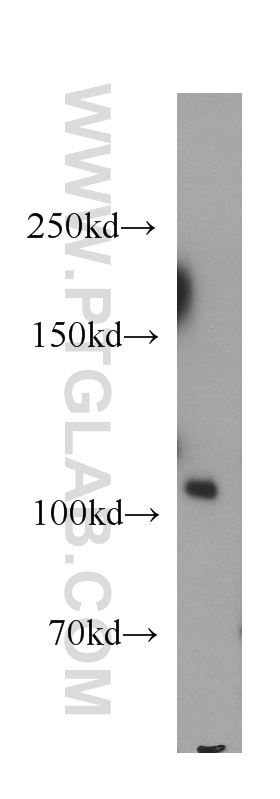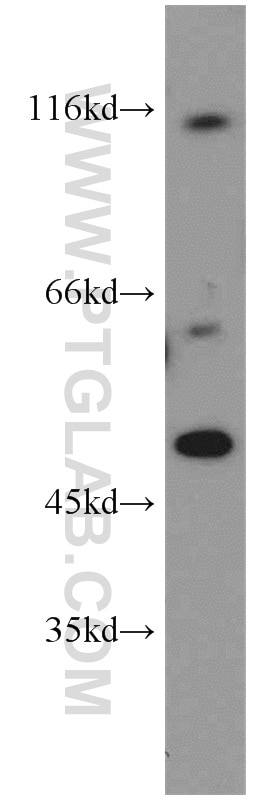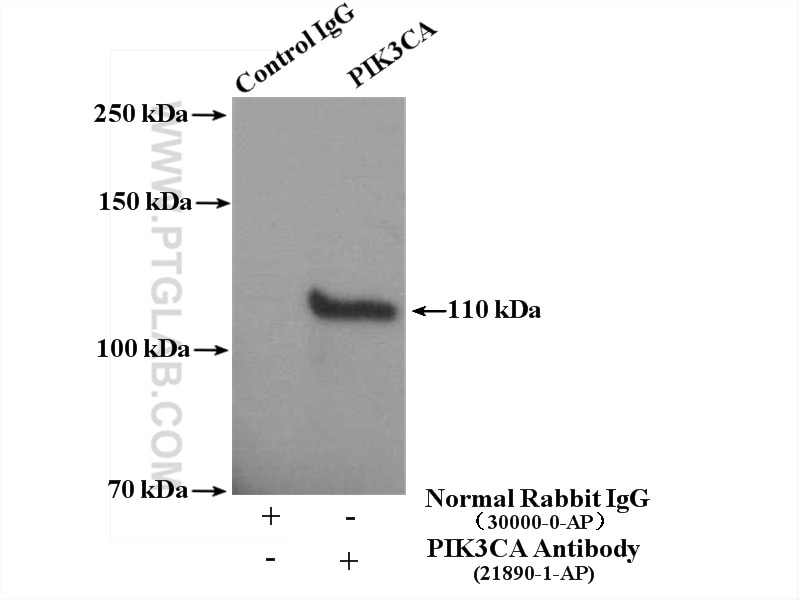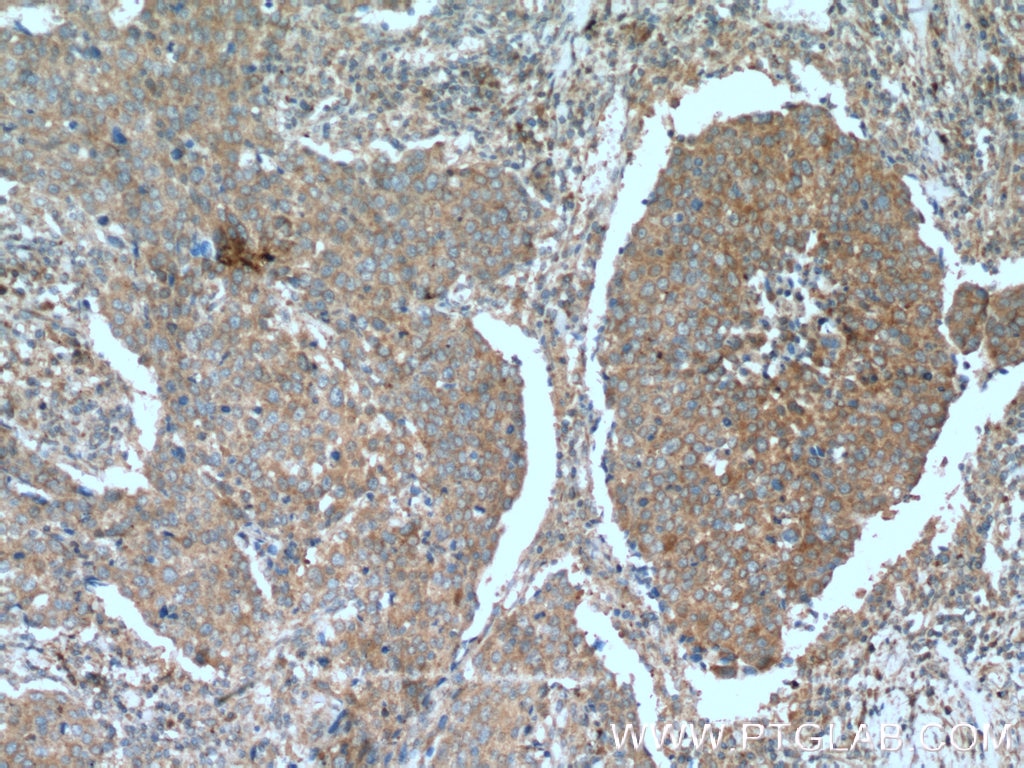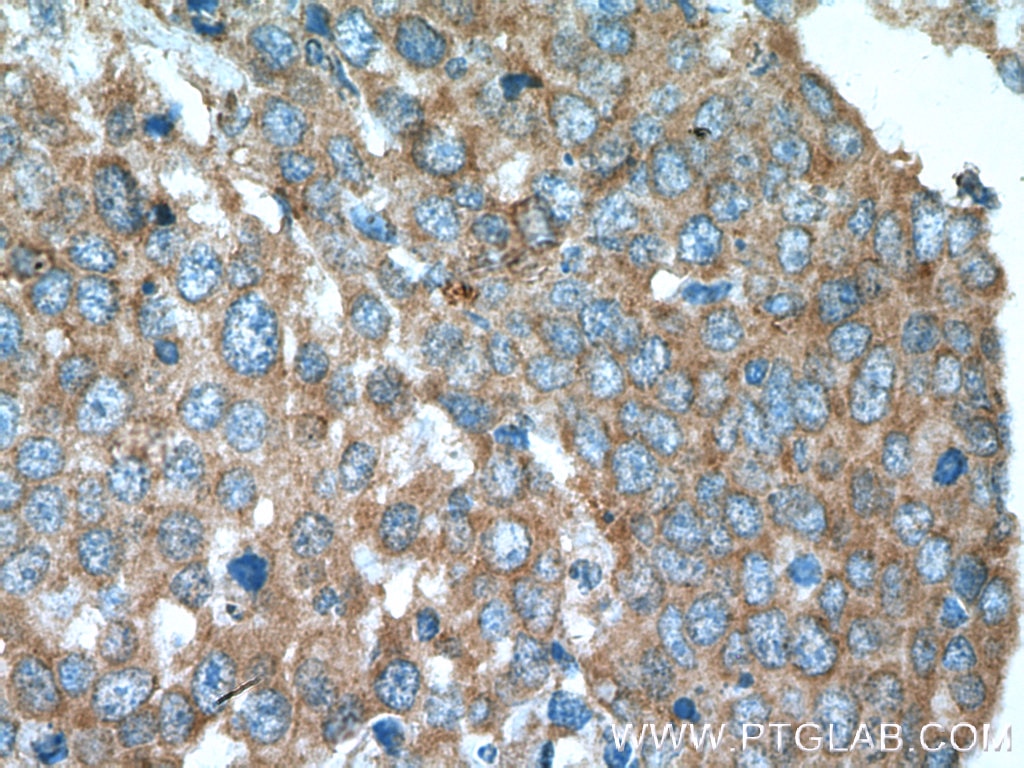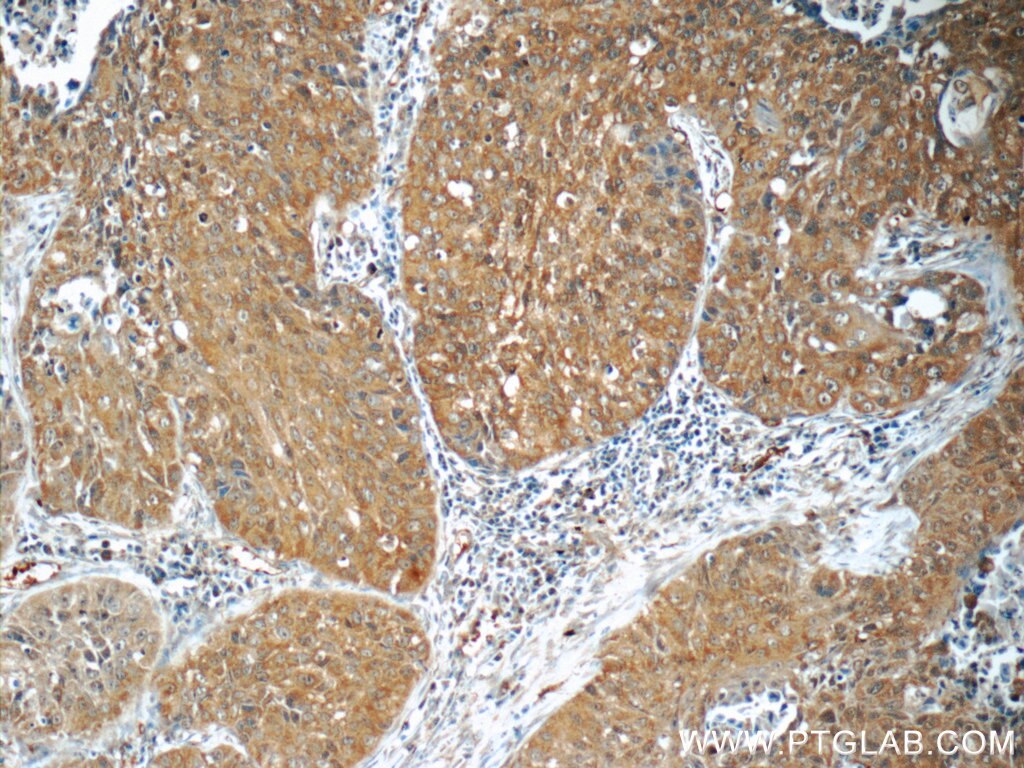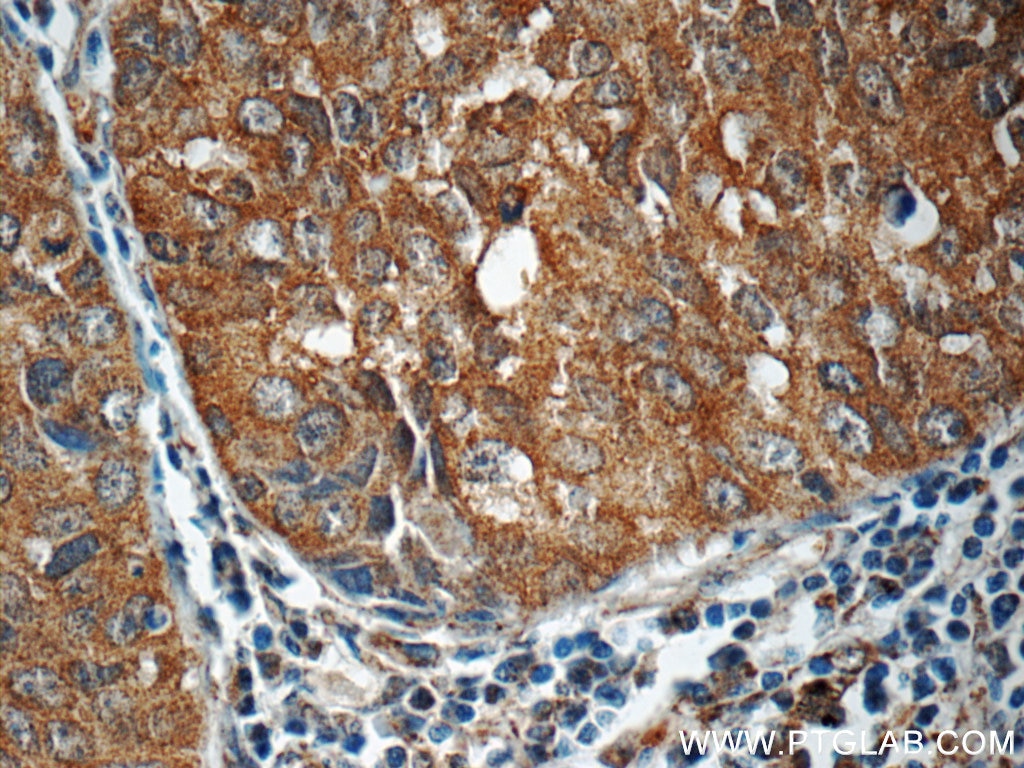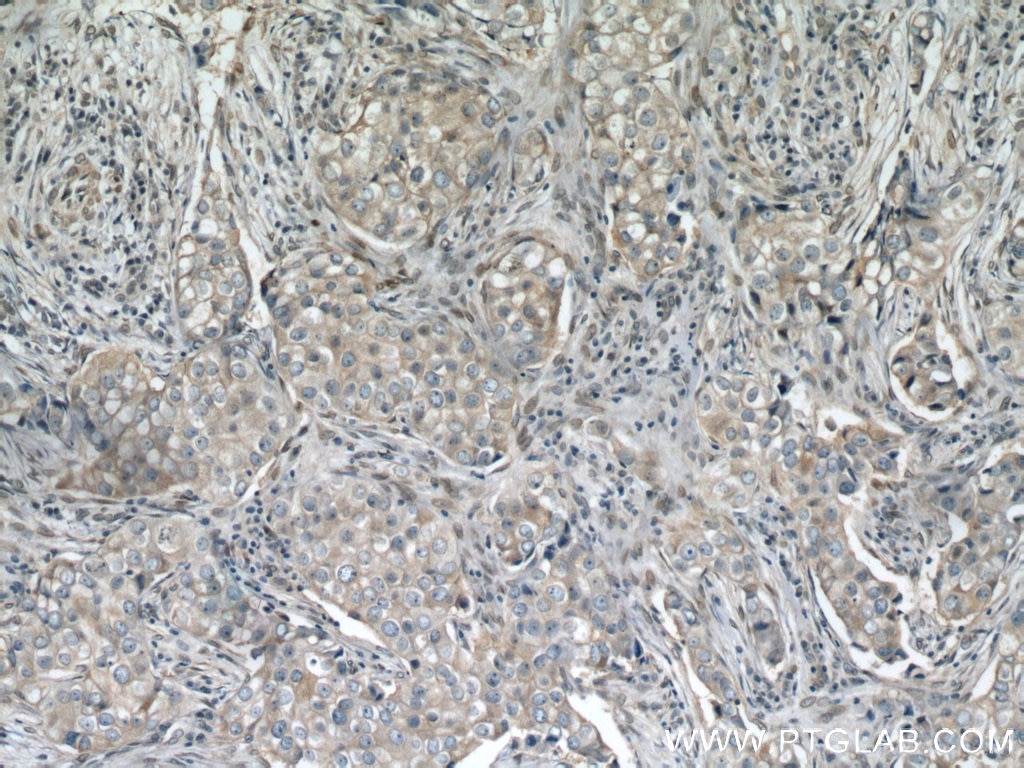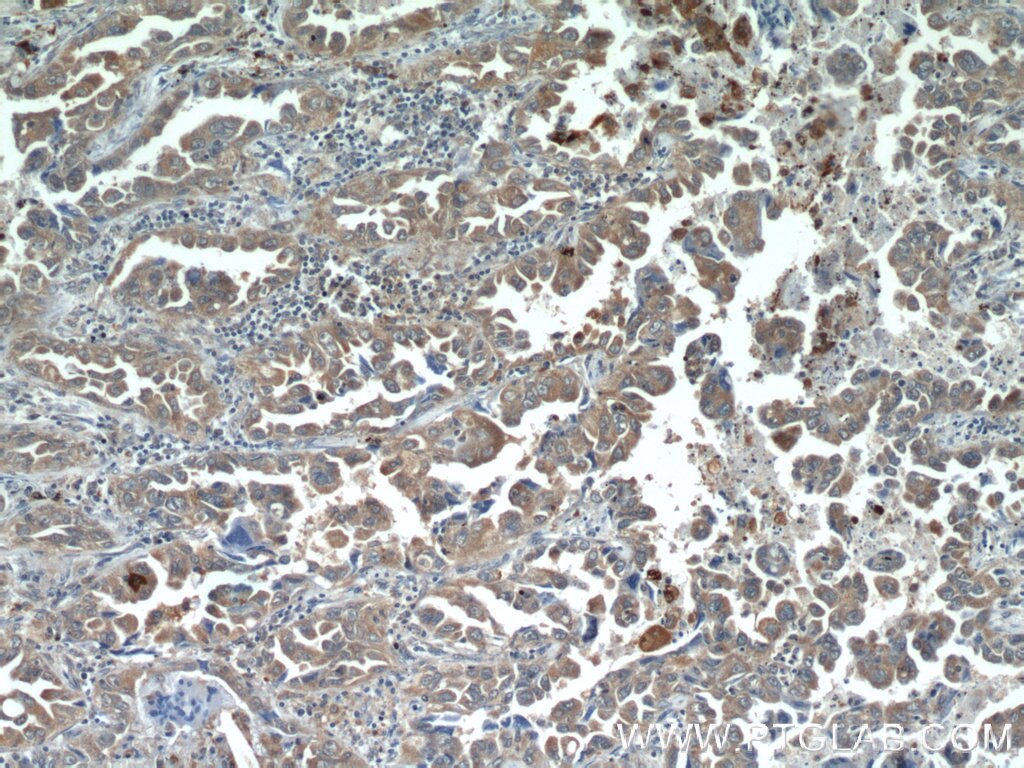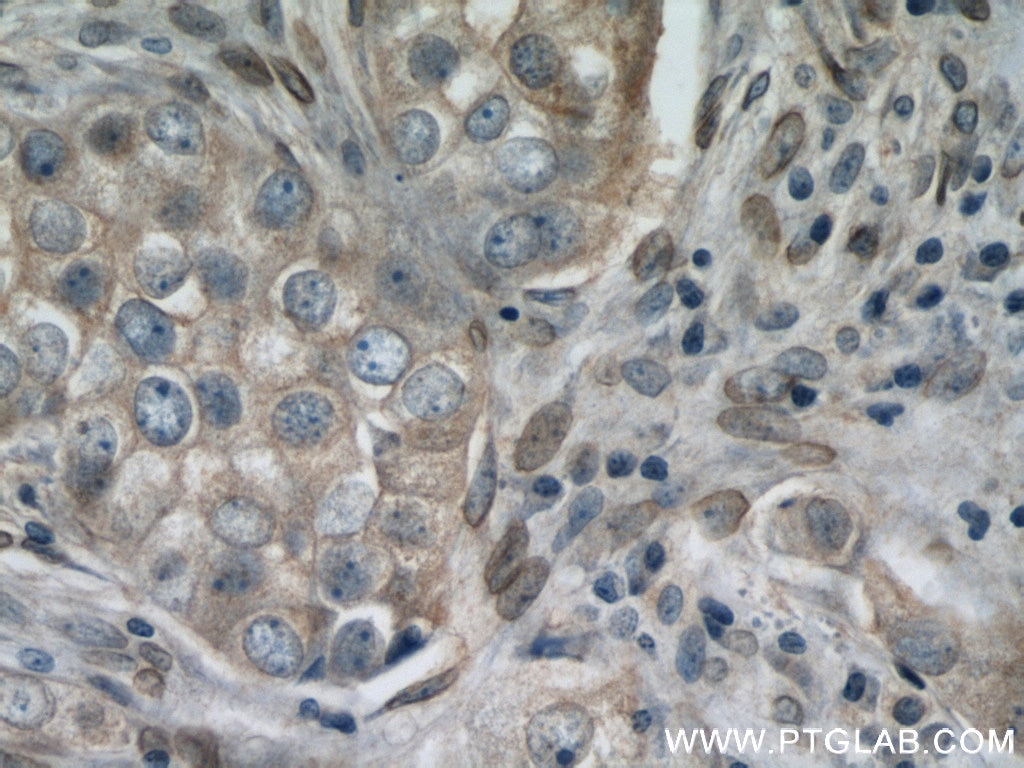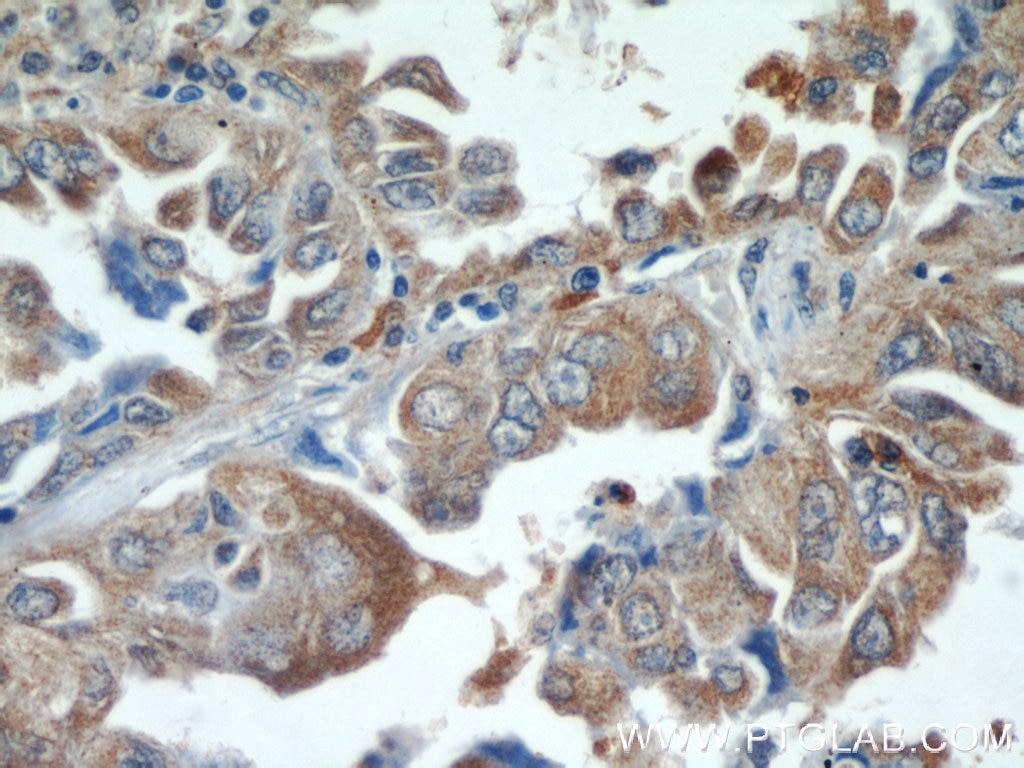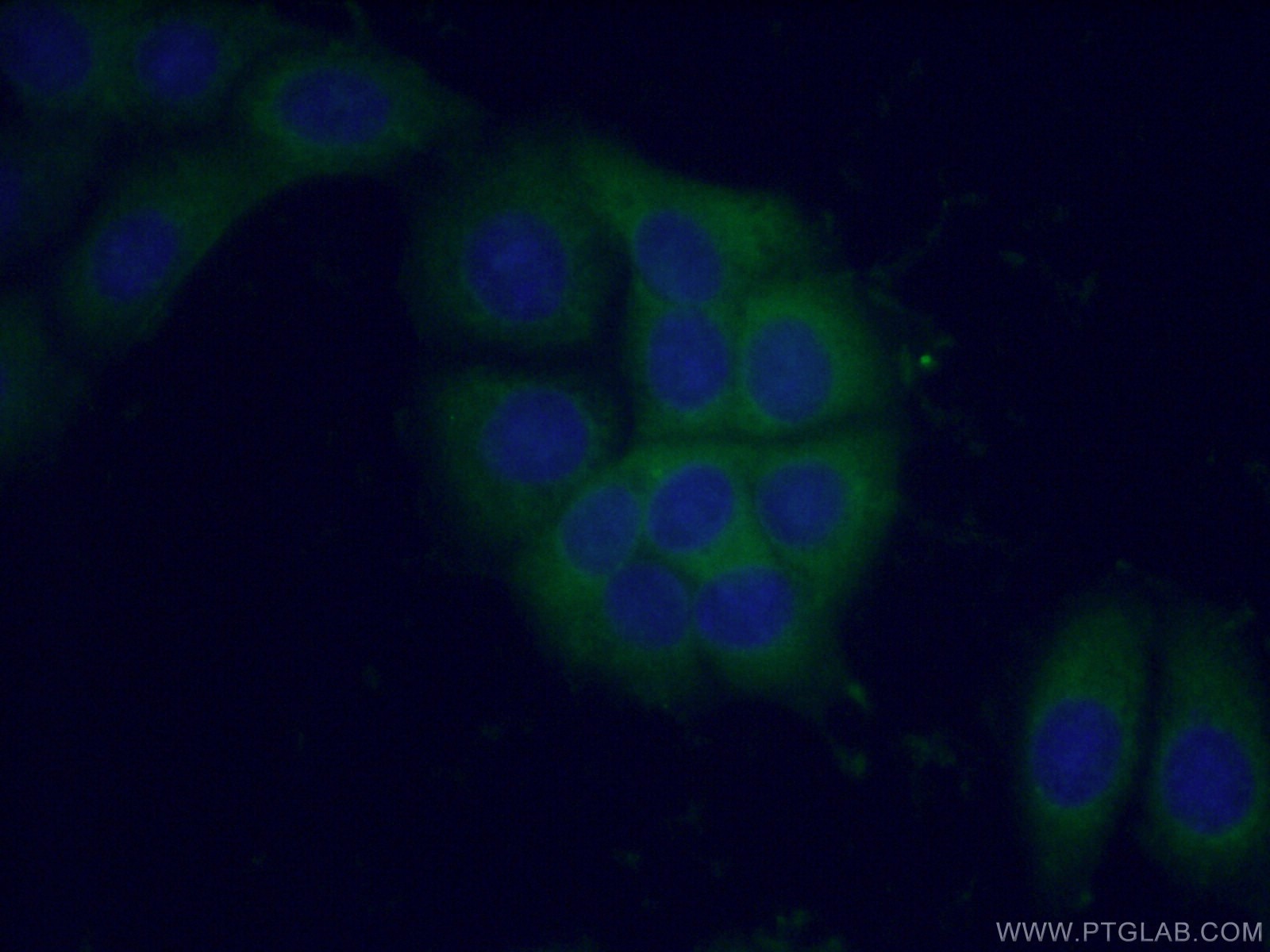Anticorps Polyclonal de lapin anti-PI3 Kinase p110 Alpha
PI3 Kinase p110 Alpha Polyclonal Antibody for WB, IP, IF, IHC, ELISA
Hôte / Isotype
Lapin / IgG
Réactivité testée
Humain, rat, souris
Applications
WB, IHC, IF/ICC, IP, ELISA
Conjugaison
Non conjugué
N° de cat : 21890-1-AP
Synonymes
Galerie de données de validation
Applications testées
| Résultats positifs en WB | tissu cérébral humain, cellules Jurkat |
| Résultats positifs en IP | tissu cardiaque de souris, |
| Résultats positifs en IHC | tissu de cancer du poumon humain, tissu de cancer du sein humain il est suggéré de démasquer l'antigène avec un tampon de TE buffer pH 9.0; (*) À défaut, 'le démasquage de l'antigène peut être 'effectué avec un tampon citrate pH 6,0. |
| Résultats positifs en IF/ICC | cellules MCF-7, |
Dilution recommandée
| Application | Dilution |
|---|---|
| Western Blot (WB) | WB : 1:500-1:3000 |
| Immunoprécipitation (IP) | IP : 0.5-4.0 ug for 1.0-3.0 mg of total protein lysate |
| Immunohistochimie (IHC) | IHC : 1:100-1:400 |
| Immunofluorescence (IF)/ICC | IF/ICC : 1:50-1:500 |
| It is recommended that this reagent should be titrated in each testing system to obtain optimal results. | |
| Sample-dependent, check data in validation data gallery | |
Applications publiées
| WB | See 20 publications below |
| IHC | See 2 publications below |
| IF | See 1 publications below |
Informations sur le produit
21890-1-AP cible PI3 Kinase p110 Alpha dans les applications de WB, IHC, IF/ICC, IP, ELISA et montre une réactivité avec des échantillons Humain, rat, souris
| Réactivité | Humain, rat, souris |
| Réactivité citée | rat, Humain, souris |
| Hôte / Isotype | Lapin / IgG |
| Clonalité | Polyclonal |
| Type | Anticorps |
| Immunogène | PI3 Kinase p110 Alpha Protéine recombinante Ag16586 |
| Nom complet | phosphoinositide-3-kinase, catalytic, alpha polypeptide |
| Masse moléculaire calculée | 1068 aa, 124 kDa |
| Poids moléculaire observé | 110 kDa |
| Numéro d’acquisition GenBank | BC113601 |
| Symbole du gène | PIK3CA |
| Identification du gène (NCBI) | 5290 |
| Conjugaison | Non conjugué |
| Forme | Liquide |
| Méthode de purification | Purification par affinité contre l'antigène |
| Tampon de stockage | PBS with 0.02% sodium azide and 50% glycerol |
| Conditions de stockage | Stocker à -20°C. Stable pendant un an après l'expédition. L'aliquotage n'est pas nécessaire pour le stockage à -20oC Les 20ul contiennent 0,1% de BSA. |
Informations générales
PIK3CA belongs to the PI3/PI4-kinase family. It phosphorylates PtdIns, PtdIns4P and PtdIns(4,5)P2 with a preference for PtdIns(4,5)P2. Defects in PIK3CA are associated with colorectal cancer (CRC). Defects in PIK3CA are associated with breast cancer. Defects in PIK3CA are associated with ovarian cancer. Defects in PIK3CA may underlie hepatocellular carcinoma (HCC). Defects in PIK3CA are a cause of keratosis seborrheic (KERSEB).
Protocole
| Product Specific Protocols | |
|---|---|
| WB protocol for PI3 Kinase p110 Alpha antibody 21890-1-AP | Download protocol |
| IHC protocol for PI3 Kinase p110 Alpha antibody 21890-1-AP | Download protocol |
| IF protocol for PI3 Kinase p110 Alpha antibody 21890-1-AP | Download protocol |
| IP protocol for PI3 Kinase p110 Alpha antibody 21890-1-AP | Download protocol |
| Standard Protocols | |
|---|---|
| Click here to view our Standard Protocols |
Publications
| Species | Application | Title |
|---|---|---|
Food Funct l-Theanine regulates glucose, lipid, and protein metabolism via insulin and AMP-activated protein kinase signaling pathways | ||
J Agric Food Chem β-Sitosterol-D-glucoside from sweet potato exerts an anti-breast cancer activity by upregulating microRNA-10a and PI3K/Akt signaling pathway. | ||
J Hematol Oncol Long non-coding RNA-SNHG7 acts as a target of miR-34a to increase GALNT7 level and regulate PI3K/Akt/mTOR pathway in colorectal cancer progression. | ||
Sci Rep NaoXinTong Capsules inhibit the development of diabetic nephropathy in db/db mice. | ||
J Exp Clin Cancer Res LINC01296/miR-26a/GALNT3 axis contributes to colorectal cancer progression by regulating O-glycosylated MUC1 via PI3K/AKT pathway. | ||
Sci Rep Hypoxia-induced ANGPTL4 sustains tumour growth and anoikis resistance through different mechanisms in scirrhous gastric cancer cell lines. |
